
9 minute read
Brister’s Brief
BRISTER’S BRIEF
Flying changes
Advertisement
The flying change is a movement required in nearly all equestrian disciplines. In the first of this two-part series, CHARLIE BRISTER unpacks the change and explains the basics.
The flying change pops up in just about every discipline – either on purpose, or quite often by accident (just ask someone who struggles to keep their horse in counter canter).
As with most things on horseback, it looks easy but very rarely is so. And due to that smooth, effortless appearance many riders will attempt a flying change before they, or their horse are ready (guilty, Your Honour).
This article looks at what the flying change is, and how to go about it from a dressage viewpoint. In our next issue, we’ll explore the differences in the way show jumping riders train and ask for a flying change.
Stephanie Spencer and Redskin R at Boneo Park with a nice uphill canter after a flying change (Image by Jessica Atkins Photography).
What are they?
Most horses can do flying changes from the time they’re foals. Getting them to execute a change exactly when we want them to is the challenging part. The horse will change leads readily when it’s easier or more efficient for them to do
so, usually due to a change of direction or fatigue.
So what exactly is a flying change? Simply put, it’s when the horse changes from one canter lead to another. So that
there’s no loss of rhythm, this ideally occurs in the moment of suspension when all four feet are off the ground, and all four legs change at that moment. When someone says they want to fix their flying changes, it’s probably due to a shortfall in the building blocks of their training. This is much the same with any complex movement that’s a combination of multiple simpler movements. Identifying which part of the flying change is the problem can help when you’re trying to improve them.
Where to start
Let’s talk about how to start the change on a dressage horse. The movement doesn’t come into a dressage test until medium level. Before then the focus is on adjustability of the canter and maintaining counter canter. This often means that training for the flying change starts well after the basic education is finished.
In their natural state, horses will flying change when changing direction – as opposed to counter canter where the focus is on keeping the horse on the same lead while changing direction. This can reduce their desire to naturally produce a flying change. To make up for this we need to get the horse responsive and accepting of the aids without creating tension, as well as working on adjustability up, down, and within the pace, and throughness:
Can your horse go from trot to canter on each rein without resistance?
Can your horse go from walk to canter on each rein without resistance?
Can you do the transitions while maintaining straightness? Will you horse yield laterally in both directions?
For a dressage rider, the end goal is tempi changes or multiple changes in a row. This can be every four, three, two, or one stride. If high level dressage is your aim keep this in mind when you begin training for the change. By maintaining the throughness and straightness in the changes you will be better placed to do the tempi changes later on. If the horse drifts after the change, that will make it harder to ask for another change straightaway. So, do you have the elementary level movements down pat i.e. shoulder in, travers, leg yield, lengthening and shortening the canter? When you’ve achieved that, you have all the basic components to start schooling the flying changes. There are plenty of different ways to start. Sometimes it takes a bit of experimentation to find out what works best for you and your horse.
My family had a Clydesdale x Thoroughbred, Timmy Almighty, who was so unbalanced and had such a weak back that he couldn’t even manage a flying change when he was running around the paddock on his own. His basic paces looked nice but there was no proper throughness. It didn’t help that ten years ago, my ideas on how to get a flying change were very limited. So Timmy Almighty was finally able to do a flying change at age nine. He could do four time changes by age 12 and one time changes by age 16. Thankfully, this isn't the normal progression for a dressage horse! But it does go to show how patience and consistent training can lead to high level movements, especially considering that the Clydesdale’s build doesn't lend itself to doing Grand Prix dressage.
Transforming Timmy
Here are some of the exercises that worked to prepare Timmy Almighty. Essentially they were walk to canter to walk to counter canter transitions. Do these around the outside of the arena, the quarter line and also on a circle. Start out by doing the transitions spaced apart, focusing on the quality of the canter. As this becomes easier, do the transitions closer together until there are only four strides of canter and four to five steps of walk between transitions. Repeat on both reins.
Make sure you maintain acceptance of the aids in the counter canter. If your horse starts to anticipate the changes, do the counter canter on straight lines rather than on a circle.
Leg yield in canter
Start cantering around the arena on the left rein. On the long side, leg yield off the right leg to the quarter line then leg yield back to the track. Repeat this on both reins until your horse can change their flexion in the canter easily.
Now try a half pass into flying change: Start in left canter. Turn up the centreline, half pass to the long side E or B. Start leg yielding off the right leg just before getting to the wall. This will straighten the horse and get the new flexion needed. Repeat on both sides.
Preparation is key
We haven't talked about asking for the change yet. That’s because preparation is key. The better the quality and adjustability of the canter before asking, the more likely the horse will understand. Most people are taught to canter on by squeezing the inside leg on the girth and having the outside leg just behind the girth. Keep it simple and ask for the flying change in the same way you would ask for a canter departure.
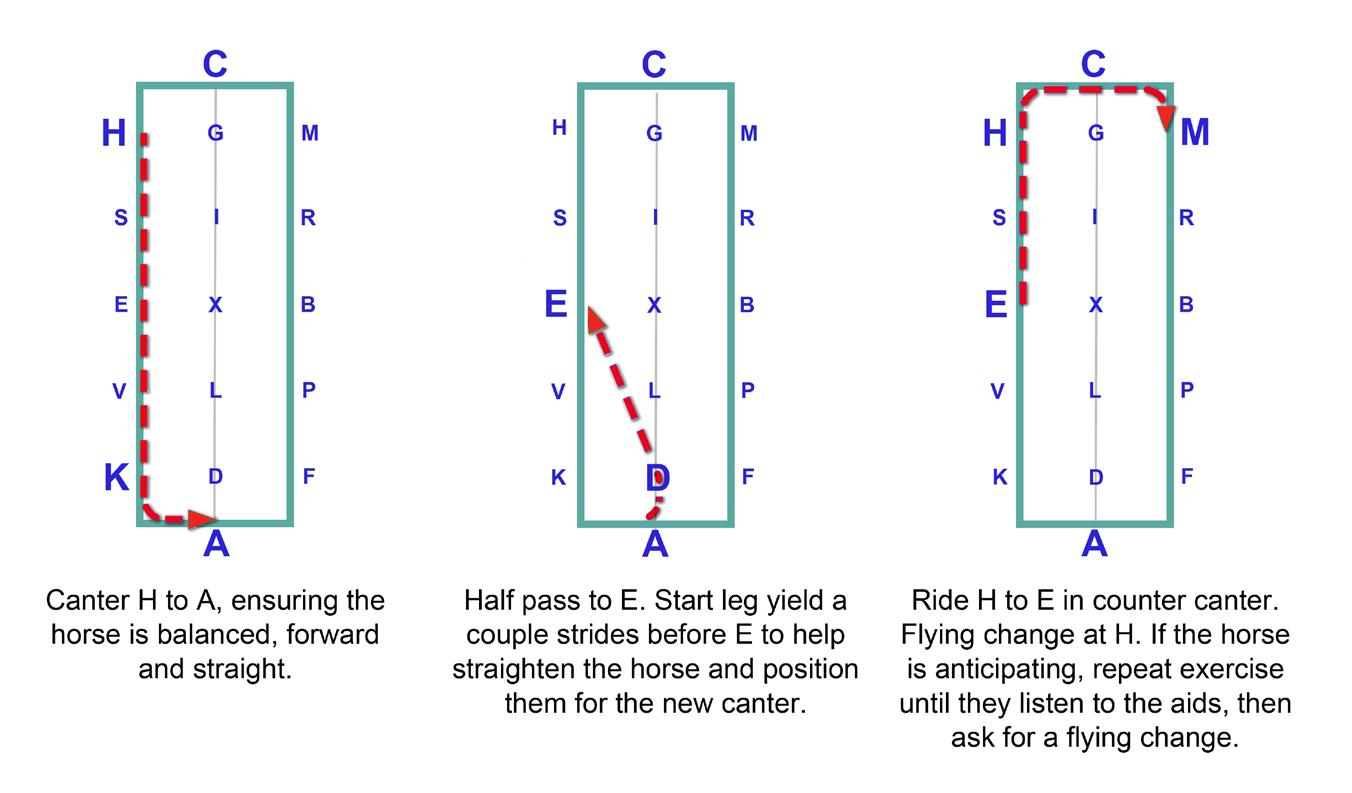
If you are cantering on the left rein and at the right time use the right canter aids the flying change might be successful. If you ask for the flying change to the right with aids that are different to what you would normally use for a right lead departure, it could be harder for the horse to understand.
Be prepared for things to go a little pear shaped. When you don't want them to change, they will and when you want them to change, they won’t. Just remember to stay calm. Sometimes you need to take a step back, and sometimes you need to ask a little more clearly.
Grand Prix dressage rider Rozzie Ryan said recently that if you want to learn French you learn from someone who speaks the language rather than someone who doesn't. Her point was that if you don't know how to ride the changes, find a horse that does, or if the horse doesn't know then it’s beneficial
for the rider to first understand them
properly. This is very good advice. I spent years fumbling along with them before my coach, Ann Slatford, let me ride her Grand Prix horse so I could understand the feeling.
Good luck and let’s hope this produces a positive change in your horse!
Charlie Brister of Brister Equestrian is an all-round horseman based in Western Sydney. His expertise is in re-training problem horses, as well as coaching riders in the art of cross country, show jumping and dressage.
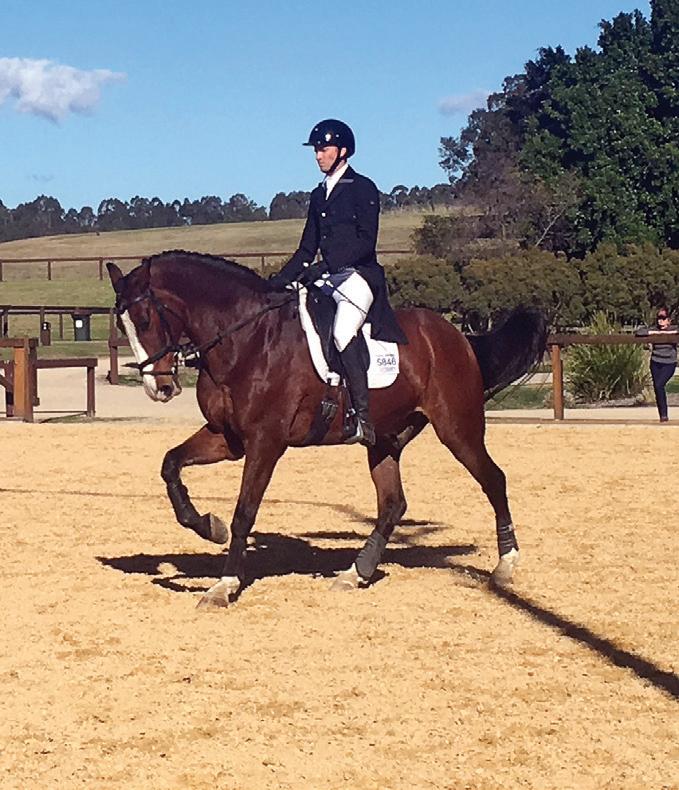
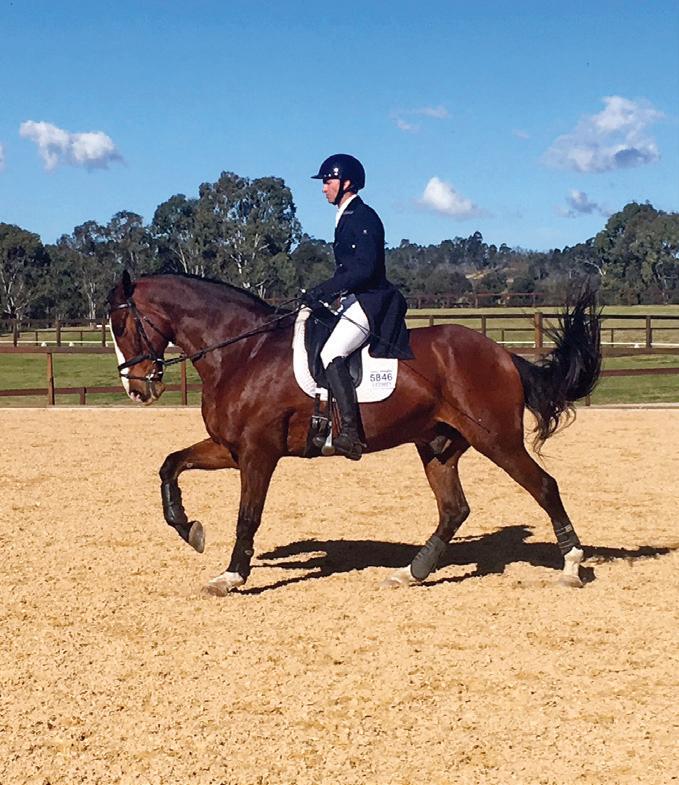
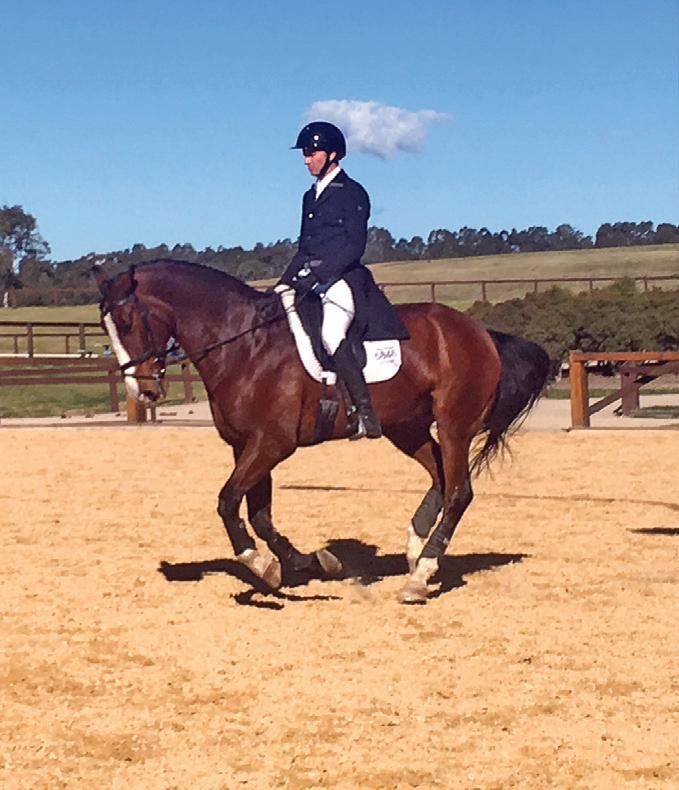

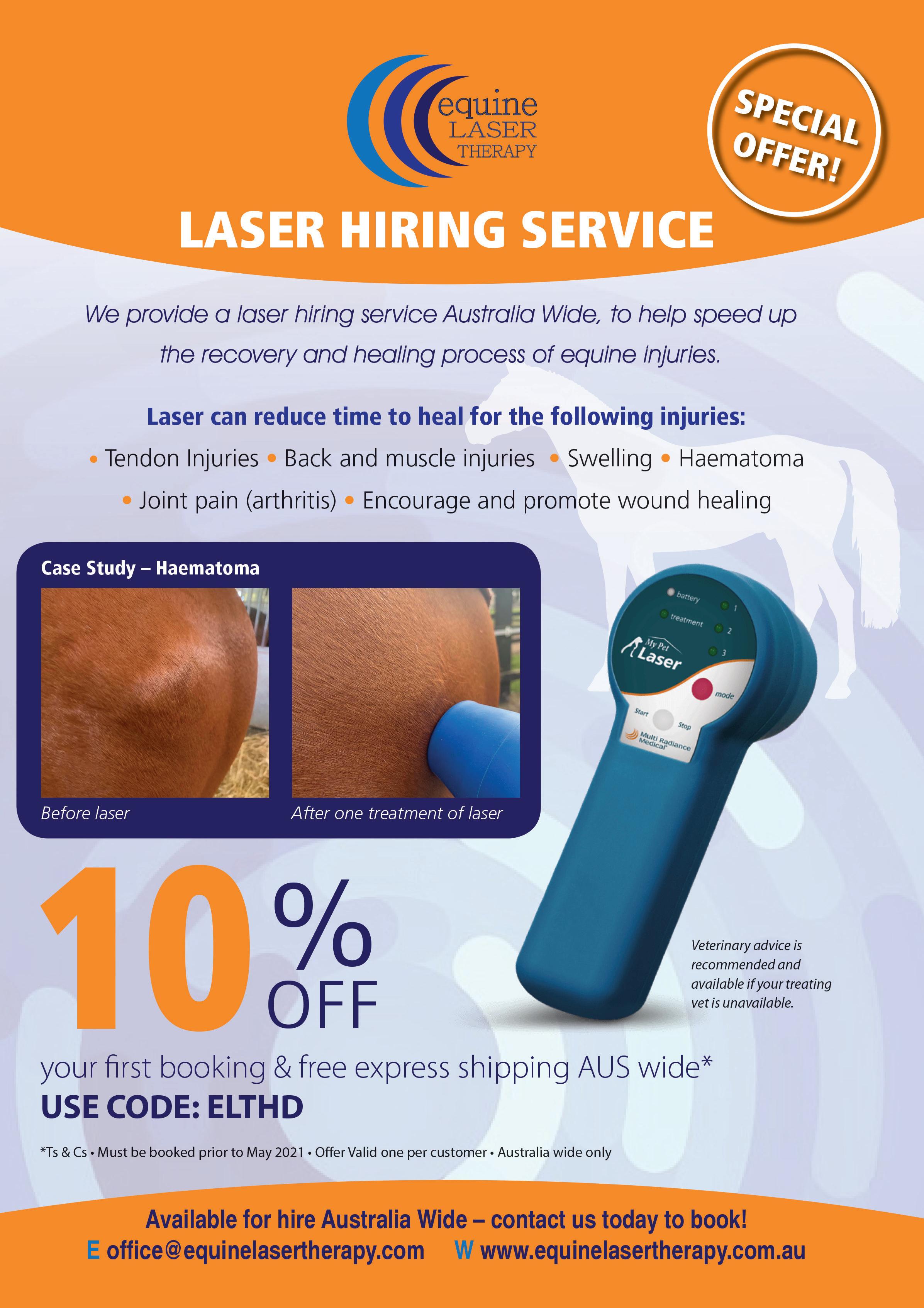
ADVERTORIAL IS LASER THERAPY THE ANSWER TO SOUNDNESS?
Laser therapy has been a popular treatment in humans and animals since the 1960s for managing pain and healing a variety of injuries.
Over the last few years, laser therapy has become a common addition to traditional healing regimes for tendon injuries, inflammation, open wounds, and reducing pain associated with Degenerative Joint Disease.
Many veterinarians are now recommending laser therapy to accelerate healing in horses as well as to maintain a sound performance horse. As horse owners, an injury-free horse gives us peace of mind; but we cannot always prevent accidents from happening. When they do happen, we now have the option of accelerating the recovery, limiting downtime with the help of Laser Therapy.
Medical-grade lasers are expensive and restricted for use by health professionals, but there is an alternative, Equine Laser Therapy laser hire service. This service is now available for horse owners to hire a safe effective laser unit and to use it under veterinary supervision Australia-wide and at a very competitive price.
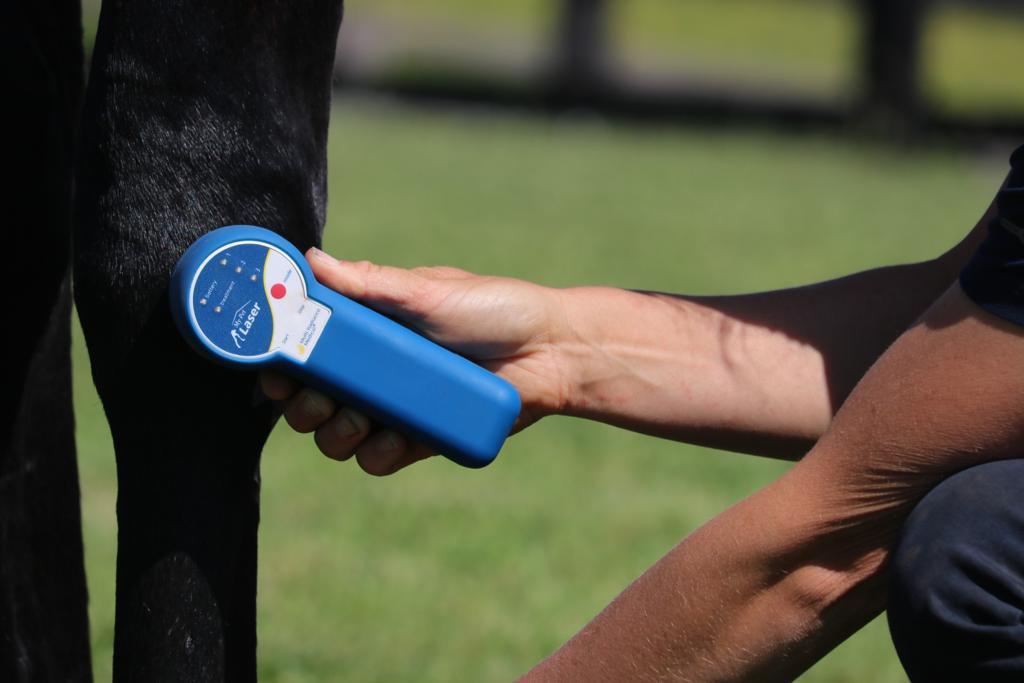
Case study #1 Open wounds
This mare got her hoof stuck in a barbed-wire fence. To reduce the inflammation and promote healing, her the owner opted for the assistance of Equine Laser Therapy. After a 6-week laser protocol, the wound displayed good healthy healing tissue, with an absence of proud flesh. The wound became comfortable during cleaning and movement and almost pain free.
BEFORE LASER AFTER LASER
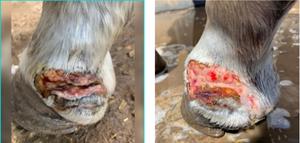
Case study #2 Tendon repair
This racehorse presented with Grade 3/5 lameness after the final pre-race gallop and received laser therapy to assist in dispersing the edema within the tendon tear and to accelerate the healing process. The expected rehabilitation time is approximately 18 months. With the use of an Equine Laser Therapy laser, the tendon recovery appeared on ultrasound examination to be 4 weeks ahead of usual.
BEFORE LASER AFTER LASER

Professional Testimonial Jade Findlay 5* Eventer
I am a 5* event rider and trainer of event horses for 20 years. Eventing is a grueling sport on our horses and my job as their trainer is to make sure they are in top condition at all times to compete at their prime.
Laser therapy has been a huge part of my management program for many years now and I have seen incredible results in many horses. Laser therapy helps me manage inflammation in all areas of my horse's bodies and I have had huge success with managing tendon inflammation whilst being able to continue on my training programs. I have used laser for treatment and also prevention leading into the major competition and would highly recommend incorporating laser into everyone's management programs, of course under the guidance of a vet.

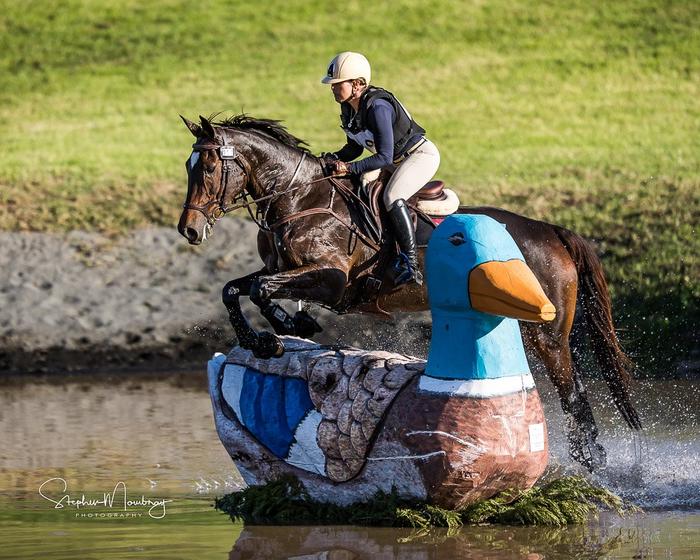
SPECIAL OFFER- 10% OFF LASER HIRE
Receive 10% off your first order & free express shipping*
Reference code: ELTHD when booking
*Ts & Cs • Must be booked prior to May 2021 • Offer Valid one per customer • Australia wide only










